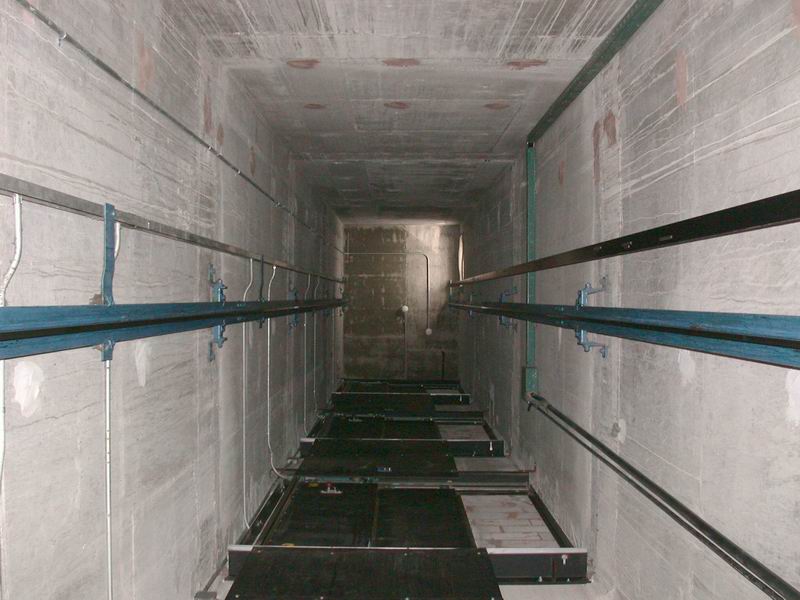EM – Elevator and building standards, along with longstanding design conventions, have traditionally required the installation of a ventilation opening at the top of the elevator shaft. However, this requirement has recently been re-evaluated and determined to be inappropriate and largely ineffective.
Standards and regulations are constantly revised to align with technological advancements, safety requirements, and real-world practicality. While in the past, a ventilation opening at the top of the elevator shaft was a mandatory feature for all buildings with three or more floors equipped with elevators, such ventilation is now considered optional and subject to the discretion of the building designer.
This article series will focus on the reasons behind the changes in regulations concerning elevator shaft ventilation:
Part 1: Why is there ventilation in the elevator shaft?
Part 2: Airflow movement within the elevator shaft
Part 3: Heat, smoke, and elevator shaft ventilation
Part 4: Controlling smoke migration into the elevator shaft
Part 1: Why is there ventilation in the elevator shaft?
First introduced into elevator design in the 19th century and firmly embedded in building codes and standards for decades, ventilation openings at the top of elevator shafts became a longstanding convention in the design, construction, and installation of elevators in buildings.
Ventilation openings were required to be installed at the top of the elevator shaft in order to prevent excessive pressure during the ascent of the elevator car, control odors, and facilitate smoke evacuation in the event of a fire:
– Pressure and airflow control (piston effect): As the elevator car moves up and down, the air inside the shaft is pushed upward or pulled downward, creating pressure differentials between the car and the floors. It was believed that a ventilation opening was needed to equalize this pressure to prevent air pressure from causing the car to shake or vibrate.
– Air exchange and odor removal: A ventilated shaft was also believed to promote air circulation, preventing the buildup of unpleasant odors inside the shaft.
– Smoke and heat relief due to chimney effect during a fire: This was the most critical reason behind the previous regulation. The goal was to prevent the accumulation of smoke and heat in the shaft during a fire. Traditionally, it was believed that if smoke entered the shaft, a vent at the top would allow it to escape and prevent it from spreading back to other floors.
Specifically, as early as 1968, the U.S. building code required elevator shafts to include a vent to ensure that “in the event smoke enters the shaft, a vent at the top provides the simplest way to prevent its spread and facilitates post-fire smoke extraction.”
Elevator shafts were historically used as trash chutes, utility conduits for electrical wiring and gas piping, and for other purposes.
The International Building Code (IBC) previously required elevator shafts to be equipped with ventilation openings. These openings had to be located at the top of the shaft and either vent directly to the outside or through ductwork having fire-resistance ratings equivalent to the shaft enclosure.
Similarly, Standard EN 81-1:1985 (adopted in Vietnam as TCVN 6395:1998) and the former British Standard BS 5655-6:1990 required that:”The lift well shall be adequately ventilated but shall not be used for ventilating other parts of the building unrelated to the lift system.
To comply with ventilation requirements for the elevator shaft, ventilation openings must be arranged at the top of the shaft, either opening directly to the outside or routed through the machine room or pulley room. Where ventilation is provided through the machine room or pulley room, a dedicated ducting system must be employed. The total area of ventilation openings shall be no less than 1% of the horizontal cross-sectional area of the shaft.”
The British Standard BS 5655-6:1990 further noted that:”The London Building Act or other applicable local regulations may require larger vent areas under certain circumstances.”

These requirements likely originated from the historical use of elevator shafts for purposes beyond elevator operation. In the United Kingdom during the early 20th century, elevator shafts were often used to house mechanical and electrical systems, as well as gas pipelines serving different floors, as they were considered the quickest and most cost-effective routing paths. Similarly, in some regions, elevator shafts were even used as refuse chutes during the 19th and early 20th centuries.
Consequently, to control odors and prevent the accumulation of gases and other airborne hazardous substances within the shaft, the prevailing building codes and standards at the time such as Section L – The Building Regulations in the UK, the International Building Code (IBC), the London Building Act of 1939, and the aforementioned elevator standards – all required that elevator shafts be properly ventilated.
However, under current regulations, the use of elevator shafts for any function other than the elevator itself is strictly prohibited under EN 81. Specifically, the elevator shaft, machine room, and pulley room must not be used for any purpose unrelated to the elevator. These spaces must not contain any pipes, cables, or other equipment that are not directly related to elevator operation.



